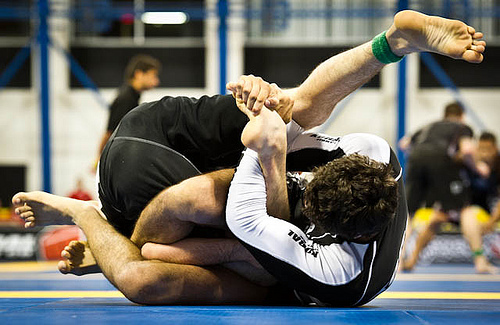In the end, when is the right time to teach your students leg attacks and defenses?
In the 1980s and early 1990s, anyone resorting to leg attacks at a Jiu-Jitsu competition would be met with a salvo of boos. There was prejudice against the moves, seen as being crude and lacking in technique. “Cobbler, cobbler,” the crowd in the stands would chant.
Time went by, Jiu-Jitsu evolved, and below-the-belt attacks began to be seen as excellent attacking options. However, leg-attack positions can easily result in training injuries, especially among the less experienced. For that reason, some foot and knee holds are only permitted in sport Jiu-Jitsu starting at brown belt.
In the academy, though, it’s all up to the teacher. It’s up to him or her to decide when it’s the right time to start teaching a student to execute and defend against the maneuvers.
“The straight foot lock can be taught starting at blue belt so they’ll begin to understand the position, so they won’t go thinking all they have to do is grab a leg and sit back. They have to understand where the pressure goes, how to sink the position. Starting at purple belt, more variations can be added to the mix. If you start teaching these positions too early on, there’s a risk the kid could get addicted to the position and become dependent on it, making for a limited game,” opines No-Gi world champion Marcus “Bochecha”.
GRACIEMAG 178, on its way to a bookstore near you, brings you a complete dossier on leg attacks. Make sure to get your copy, and subscribe here to not miss any of the other succulent lessons that feature in the magazine down the road!
The post When’s the right time to teach students leg attacks? first appeared on Graciemag.
